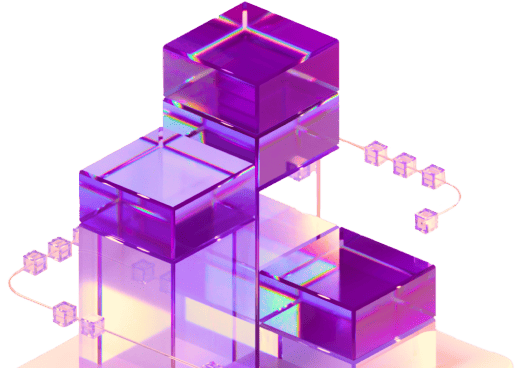Terra’s (LUNA) staking volume has surpassed 400 million tokens, marking a significant milestone in the growth of the network. The surge in staking activity is being fueled by the rising demand for UST, Terra's native stablecoin, which is contributing to the platform’s broader ecosystem expansion. As Terra continues to develop, its staking model and the increasing popularity of UST are reshaping the decentralized finance (DeFi) landscape.
Terra’s Staking Growth: A Reflection of Network Trust
Terra, known for its algorithmic stablecoins like UST, has seen substantial growth in its staking ecosystem. The 400 million LUNA tokens now staked on the network represent a significant portion of the total circulating supply, indicating strong community trust and participation. This surge in staking volume comes at a time when the Terra ecosystem is seeing greater integration with decentralized finance (DeFi) protocols and other blockchain applications.
Several factors are contributing to this rapid increase in staking participation:
-
Competitive Staking Rewards: LUNA stakers are incentivized with attractive rewards, making it a lucrative choice for crypto investors looking to earn passive income.
-
UST Stablecoin Demand: The increasing adoption of UST as a stable store of value and medium of exchange has created a demand for LUNA staking, as the minting of new UST requires staking collateral in the form of LUNA.
-
Enhanced Network Security: The growing number of stakers strengthens the security and stability of the Terra blockchain, making it more resilient against potential attacks.
UST’s Role in Terra’s Ecosystem and Staking Growth
UST, Terra’s algorithmic stablecoin, plays a central role in the platform's economic model. As a stablecoin designed to maintain its value relative to the US dollar, UST is becoming increasingly popular in the DeFi ecosystem, as it offers a secure and predictable asset for transactions. The demand for UST has directly impacted the staking volume of LUNA, as users are required to stake LUNA to mint new UST tokens.
The key drivers of UST’s success include:
-
DeFi Integration: UST’s increasing usage in decentralized finance platforms is a key factor driving its adoption. It is being used as collateral for lending, as a store of value in liquidity pools, and for yield farming.
-
Terra’s Stability Mechanism: The underlying algorithm that ensures UST’s peg to the US dollar through LUNA staking provides users with confidence in its long-term viability, making UST a trusted choice in the volatile crypto market.
-
Interoperability with Other Ecosystems: UST is increasingly being adopted on other blockchain networks through cross-chain bridges, further increasing its usage and, consequently, the need for LUNA staking.
As the demand for UST continues to grow, more LUNA tokens are being staked to meet the required collateral, driving up the staking volume.
The Relationship Between LUNA Staking and DeFi Growth
The success of UST has had a profound impact on the growth of Terra’s decentralized finance ecosystem. By enabling users to leverage the stable value of UST, the Terra network has created opportunities for both small investors and institutions to participate in decentralized finance activities, such as lending, borrowing, and yield farming.
Key developments in the DeFi space include:
-
Yield Farming with UST: Users can now earn rewards by staking UST in liquidity pools across multiple decentralized platforms, leading to higher demand for both UST and LUNA.
-
Liquidity Mining Programs: Programs designed to incentivize liquidity provision to various DeFi protocols have attracted significant capital, helping Terra grow its DeFi presence.
-
Growing Partnerships: Terra’s partnerships with other DeFi platforms and financial institutions are expanding its reach and further promoting LUNA staking.
As DeFi continues to grow, the role of LUNA and UST will become increasingly critical, driving further innovation in decentralized financial applications.
Institutional Adoption and the Future of Terra’s Staking Ecosystem
With the rise of institutional interest in blockchain technology, Terra’s staking model is beginning to attract institutional investors looking for sustainable and profitable ways to engage with the blockchain ecosystem. Institutional adoption is further driving the demand for both LUNA and UST, as these entities seek stable assets for their portfolios.
Several factors that contribute to Terra’s appeal for institutional investors include:
-
High Returns on Staking: Institutional investors are looking for high-yield, low-risk opportunities, and the staking rewards for LUNA are highly competitive.
-
Security and Transparency: Terra’s proof-of-stake consensus mechanism and transparent governance structure offer institutions confidence in the platform’s integrity and security.
-
Scalability and Efficiency: Terra’s blockchain is designed for high throughput and low transaction costs, making it an attractive platform for institutional DeFi applications.
As more institutional investors enter the space, the demand for LUNA staking will likely continue to rise, further solidifying Terra’s position in the blockchain and DeFi ecosystem.
Future Outlook for Terra’s Staking Ecosystem
Looking ahead, the Terra ecosystem is poised for further growth. As UST adoption continues to increase and the DeFi market expands, the demand for LUNA staking will likely see continued upward momentum. Some of the key trends to watch for include:
-
Further Expansion of UST’s Use Cases: As more decentralized applications integrate UST, the need for LUNA to secure UST’s value will drive even more staking activity.
-
Improved Staking Infrastructure: New staking solutions and providers will emerge, offering users greater flexibility and rewards.
-
Governance and Upgrades: Terra’s governance system, which is designed to be decentralized and community-driven, will likely evolve with new upgrades, further boosting confidence in the network.
Conclusion
The successful growth of LUNA staking and the increasing demand for UST have marked a defining moment for the Terra ecosystem. As more tokens are staked and the UST stablecoin continues to gain traction in the DeFi ecosystem, Terra’s blockchain is becoming one of the most important players in the crypto space. With institutional adoption on the rise and an expanding DeFi ecosystem, Terra’s future looks incredibly promising, and its staking volume is set to continue growing.

 English
English
 Deutch
Deutch
 Espanol
Espanol
 Francais
Francais
 Portugues
Portugues
 日本
日本
 한국인
한국인
 Türk
Türk
 Русский
Русский
 Tiếng Việt
Tiếng Việt

